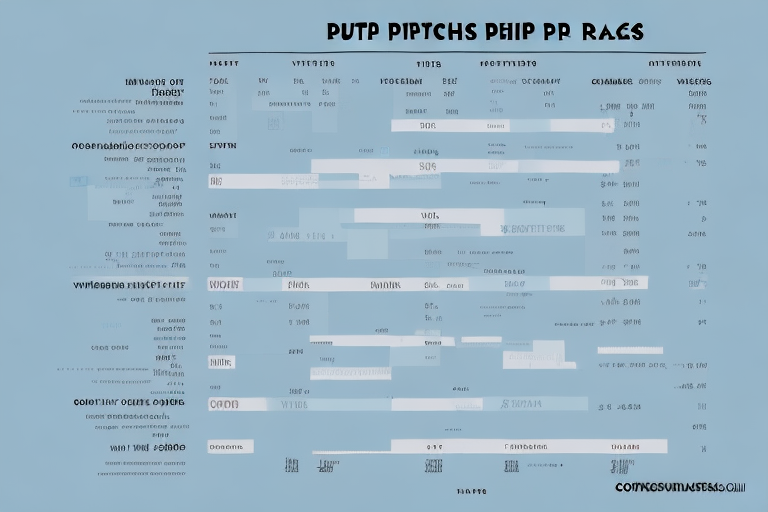Understanding the Importance of UPS Shipping Rates for Your Business
As a business owner, navigating the complexities of shipping rates is essential for maintaining profitability. UPS shipping rates directly impact your bottom line, making it crucial to comprehend how these rates are determined and how they can be managed effectively.
By mastering UPS shipping rates, you can:
- Optimize Shipping Costs: Reduce expenses by selecting the most cost-effective shipping options.
- Enhance Customer Satisfaction: Provide accurate shipping estimates, fostering trust and loyalty.
- Improve Profit Margins: Make informed decisions that positively affect your overall profitability.
How UPS Determines Shipping Rates by Weight
UPS utilizes a standardized pricing system to calculate shipping rates, with weight being a primary factor. However, several other elements also influence the final cost:
Key Factors Affecting UPS Shipping Rates
- Package Weight: Heavier packages incur higher shipping costs. UPS typically handles packages up to 150 pounds domestically and 70 pounds internationally.
- Distance Traveled: The farther a package must travel, the higher the shipping rate. UPS's extensive network of distribution centers and transportation hubs helps streamline this process.
- Service Level: Faster delivery services, such as overnight or two-day shipping, come at a premium compared to ground shipping.
- Package Dimensions: Oversized or irregularly shaped packages may incur additional fees due to handling requirements.
For a comprehensive overview, refer to the UPS Rate Calculator.
Utilizing the UPS Shipping Rates by Weight Chart
The UPS Shipping Rates by Weight Chart is an invaluable tool for businesses to estimate shipping costs accurately. Here's how to effectively use the chart:
Steps to Use the Shipping Rates by Weight Chart
- Determine Package Weight: Weigh your package accurately using a reliable scale.
- Identify Shipping Zone: Locate the destination zone based on UPS's shipping zone map.
- Select Service Level: Choose the appropriate UPS service (e.g., Ground, 2nd Day Air, Next Day Air).
- Calculate Cost: Use the chart to find the corresponding shipping rate based on the weight and zone.
Regularly updating your knowledge with the latest UPS rate changes ensures accurate cost estimations. Check the UPS website frequently for updates on shipping rates and services.
Strategies to Save on UPS Shipping Rates by Weight
Implementing effective strategies can lead to significant savings on UPS shipping rates:
1. Bundle Shipments
Consolidate multiple packages into a single shipment to take advantage of bulk shipping discounts.
2. Utilize UPS Online Tools
Leverage UPS's online tools to estimate costs, track packages, and manage shipments efficiently.
3. Negotiate Rates
Build a strong relationship with UPS to negotiate better rates, especially if you have high shipping volumes.
4. Consider Alternative Shipping Methods
For large or heavy items, explore freight carriers as a more cost-effective alternative to standard UPS services.
According to Statista, optimizing shipping can reduce costs by up to 20%, significantly impacting your bottom line.
Comparing UPS Shipping Rates with Other Major Carriers
To ensure you're getting the best deal, it's important to compare UPS shipping rates with other major carriers like FedEx and USPS:
Key Comparison Factors
- Shipping Speed: Compare delivery times for similar services.
- Cost: Analyze the price differences for various weight classes and zones.
- Service Reliability: Consider the reputation of each carrier for on-time deliveries and package safety.
- Additional Services: Evaluate value-added services such as tracking, insurance, and customer support.
Resources like the Consumer Reports provide detailed comparisons and customer satisfaction ratings to aid in your decision-making process.
Understanding Additional Fees and Charges
Beyond basic shipping rates, UPS may impose additional fees and charges that can affect your overall costs:
Common Additional Fees
- Residential Delivery Fee: Additional charges for delivering to residential addresses.
- Fuel Surcharge: Variable fees based on current fuel prices.
- Weekend Delivery: Extra costs for delivering packages on Saturdays or Sundays.
- Special Handling Fees: Charges for fragile, oversized, or high-value packages.
Understanding these fees is crucial to avoid unexpected costs. For a detailed breakdown, visit the UPS Surcharge Information.
Future Trends and Predictions for UPS Shipping Rates
Looking ahead, several trends are expected to influence UPS shipping rates:
1. Technological Advancements
The integration of AI and machine learning can optimize routing and reduce operational costs, potentially lowering shipping rates.
2. Sustainable Shipping Practices
Growing emphasis on sustainability may lead to increased investments in eco-friendly technologies, impacting shipping costs.
3. Global Economic Factors
Fluctuations in fuel prices, labor costs, and international trade policies will continue to affect shipping rates.
4. E-commerce Growth
The booming e-commerce sector will drive demand for efficient shipping solutions, influencing rate structures and service offerings.
Staying informed about these trends through reputable sources like Bloomberg Business can help businesses anticipate and adapt to changes in shipping rates.
Effective Management of Your UPS Account and Package Tracking
Managing your UPS account and tracking packages efficiently can streamline your shipping processes:
UPS Account Management Tools
- Online Dashboard: Monitor and manage all your shipments in one place.
- Automated Notifications: Receive updates on package status and delivery milestones.
- Scheduled Pickups: Arrange regular package pickups to save time and ensure timely shipments.
Package Tracking Best Practices
- Provide Accurate Information: Ensure all package details are correct to avoid delays.
- Utilize Tracking Numbers: Share tracking information with customers for transparency.
- Monitor Delivery Status: Keep an eye on shipments to address any issues promptly.
For more details on managing your UPS account, visit the UPS Technology Services page.




















